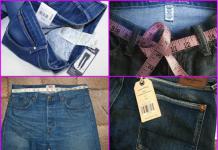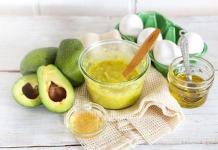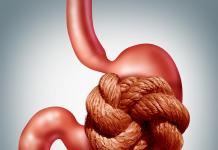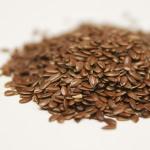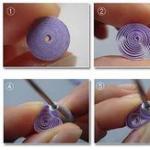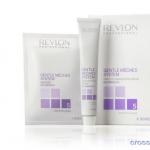Every mother, especially those expecting her first child, should know how to sterilize baby bottles
The appearance of a baby in a family always puts the family in a special mode. A baby bottle becomes a common household item, and washing it becomes a routine procedure. Some mothers take this extremely seriously and strive not only to wash, but also to sterilize dishes after each feeding, zealously protecting their baby from germs.
Newborn babies often suffer from colic and stool disorders, the reason for this is the imperfection of the digestive system, which in the first months of life experiences increased stress and learns to digest incoming food. The ingress of pathogenic flora with dishes or a pacifier will create additional pressure on the body. What is the easiest baby bottle to keep clean at home?
Which bottle is better?
A huge variety of accessories for babies allows parents to choose the right dishes based on shape, size and price. Inexperienced parents are primarily attracted by the appearance of the product or its interesting shape. A bottle is a utensil for a child; when buying it, you need to be guided only by issues of practicality. The best dishes for a child:
- should be easy to wash;
- do not lose appearance during sterilization;
- withstand a large number of treatments;
- be resistant to shocks and falls;
- have a shape that allows you to hold it in your hand.
Simple shaped bottles with a capacity of up to 200 grams are easy to clean. Cleaners should be separate and used only for this purpose.
Many mothers use liquid for washing children's dishes, but there is no practical need for it (this is not a pan with fat that cannot be washed in any other way).
Although the manufacturer assures that such household chemicals are easily washed off, in the first months of a child’s life you can wash bottles without much effort with regular baking soda, without loading the baby’s body with chemical residues that may not be entirely harmless.
Glass bottles are a little heavier than plastic bottles, but they can be easily washed and sterilized in any way without changing their properties. They can break, but in the first months of life, parents monitor this, so the risk for the child is minimal.
Plastic bottles have many advantages:
- they are light;
- they are easy to wash;
- don't fight;
- Their cost is much less than glass ones.
But such dishes have many disadvantages:
- the use of containers from an unknown manufacturer can lead to the release of toxic substances into baby food;
- it is difficult to sterilize - plastic does not withstand high temperatures, receiving microcracks and losing its shape;
- Due to cracks and frequent washing, it loses its appearance.
It is necessary to have 2 bottles of different sizes made of different materials, even if the baby is breastfed, sometimes there is a need to express milk. If a child is on artificial nutrition, having several different bottles is a necessity.
Is it always necessary to sterilize?

Young parents of first-born children, who do not have their own experience, are forced to choose between the advice of progressive pediatricians and the harsh pressure of pediatricians of the old Soviet school and grandmothers and aunties who raised their children in Soviet traditions.
According to this concept, the child cannot independently protect himself from infection and must be surrounded by maximum sterility. Therefore, bottles and all baby dishes need to be not just washed, but sterilized.
The Ukrainian pediatrician Komarovsky and a number of pediatricians of the new school have a completely different position - they believe that parents should not prevent the child from forming an immune system by excessively protecting him from the microorganisms among which he will have to live.
Cleanliness is necessary, but excessive zeal is harmful. It is excessive cleanliness, coupled with the use of disinfectants, that is the trigger for the development of allergies and does not allow the child to form sufficient immune defense precisely at the moment when nature intended it - in the first years of life.
According to Komarovsky, only containers for storing milk, which are an excellent breeding ground for pathogenic microorganisms, should be sterilized.
Whatever point of view parents support, you need to sterilize dishes for children from time to time. Young mothers should know how to properly sterilize baby bottles at home and how often to do it.
Until what age is sterilization required?

A breastfed baby who is getting enough milk may only need a water bottle for up to 6 months. It is enough to wash it with hot water and sterilize it 3-4 times a month.
For a child who is fed formula milk, sterilization in the first month of life is carried out at the choice of the parents, daily or once every few days. As they get older, sterilization can be done less frequently.
Pediatricians of the new school deny the need for sterilization after 6 months; doctors of the Soviet school recommend sterilizing feeding bottles and dishes up to 18 months (this is motivated by the late maturation of the child’s immune system).
What else needs to be sterilized?
To feed a child, not only bottles are used - cups, dishes for mixing formulas, spoons, spare nipples. These items can be sterilized from time to time. This is carried out together with bottles; items are washed before sterilization.
You can sterilize:
- milk suction;
- spare pacifiers;
- teeth rings, chewing toys;
- toys that a baby chews when teething and that can withstand boiling.
Many people are interested in how to sterilize nipples? If these are silicone products for bottles, they are placed for sterilization along with other dishes, bottle caps and pacifiers (on the top shelf of a steamer, for example). If the nipple needs to be replaced, you can use products boiled separately in a saucepan. Some mothers store sterilized pacifiers and nipples in a separate airtight container.
Brightly colored toys made in China should not be given to a child to chew on.
Preparing for sterilization

After feeding the baby, children's dishes are washed immediately - this cannot be put off due to fatigue or lack of time. Formula bottles after use:
- Unscrew, separate the lid and nipple, they are also separated;
- Empty of uneaten formula, milk or porridge;
- Rinse the glass for the first time with cold water - this way the glass is better cleaned of milk residues and becomes transparent;
- Wash with hot water using baby dishwashing liquid, special soap or baking soda;
- Contaminants at the bottom are washed with a brush;
- Residues of food on the thread for the nipple are washed with a special brush;
- The nipples are washed using the same products and a brush for washing baby dishes;
- Rinse the baby dishes first with warm, then with cold running water, turn them over onto a clean towel or folded gauze and allow the water to drain.
Types of sterilization
When is sterilization necessary? First of all - after purchasing the dishes, then after:
- the bottles have not been used for a long period;
- after the child was sick;
- periodically after too long use.
There are many ways to properly sterilize bottles and nipples - from traditional boiling in a pan to disinfectant tablets. To sterilize bottles and nipples, you can use all household appliances that can heat the contents to a boiling point.
Grandma's way

The easiest way to sterilize children's dishes is simple boiling. How to do this correctly and how long should you boil items?
- Place gauze folded in several layers on the bottom of a large saucepan with a lid.
- The washed children's dishes, which are to be sterilized, are carefully placed on the gauze.
- Fill the pan with water so that it covers the entire dish by 3-5 centimeters.
- Over medium heat, bring water to a boil and leave for 15 minutes.
- After cooling, the water is poured out, and the sterilized bottles are stored until they are needed.
The method can be used for all types of dishes.
Sterilizer
The industry produces many types of special sterilizers:
- single;
- multiple;
- steam;
- electrical;
- microwave designs.
The washed children's dishes are placed in the sterilizer compartments and acted according to the instructions. The bottles may remain in the device until used.
Most often, steam sterilizers powered by the Philips AVENT network are used for sterilization. It is designed to handle multiple bottles (6) and can also serve as a storage container for clean, sterile products for up to six hours. For sterilization you need:
- Prepare dishes and sterilizer;
- Pour water into the reservoir compartment;
- Place the bottles in the sterilizer;
- Turn on and set the mode.
Sterilization time is up to 12 minutes; utensils should be used as needed.
Double boiler
The question of how to sterilize bottles in a double boiler is quite relevant - now almost every kitchen has such a device. To do this you need:
- Pour water into the steamer;
- Place the washed dishes with the neck pointing down;
- The rest of the small dishes and nipples are installed in the upper part of the steamer;
- The cooking program is set for 15 minutes;
- Once the cookware has cooled down, it can be used.
Bottles can be used as needed.
Multicooker
This device is now available in almost all families. The kitchen assistant will do an excellent job not only with preparing dishes, but also with sterilization. How to sterilize bottles in a slow cooker correctly?
To disinfect dishes:
- A liter of water is poured into the device (bowl);
- Prepared baby bottles and pacifiers are washed and placed on the steamer rack;
- Select steam mode;
- After 15 minutes the device is turned off.
Ready-made bottles are used as needed.
Microwave oven
Every mother should know how to sterilize baby bottles in the microwave. This method is used for all dishes that need to be disinfected without a sterilizer. In order to ensure sterile conditions for some time after processing, the bottles are placed in a special bag or container, which will be sterilized in the oven along with the bottles placed in it. The container is filled with cold water, placed in the oven, and turned on for 10 minutes.
Disinfection using tablets
For “camping” conditions, on a trip, when it is not possible to use sterilizers or boil children’s dishes, you can use disinfectants in tablets (Milton, Bebe Comfort). This is a patented pharmaceutical product that does not harm the child’s body. To disinfect the tablets, pour cold water and keep the bottles in it for at least 30 minutes; longer is not necessary. The drug can be used for dishes that cannot withstand boiling or steam.
The most valuable and beneficial thing for your baby, of course, is breast milk. And not one alternative food can compare with. Almost every mother knows about its benefits, but not everyone knows how to store expressed breast milk correctly in different conditions. During lactation, a young mother may face various problems and situations, for example:
- need to go to work;
- the child bit through the breast;
- the baby suddenly refuses to take the breast;
- need to leave urgently;
- any other life circumstances when the child has to be left at home with a nanny, grandmother, or relatives.
And during these periods, in order to solve problems as carefully as possible, mothers try to express and leave the milk so as not to disturb the child’s diet (). And a logical question arises: what should breast milk be stored in and how long can it be stored without losing its beneficial properties?
Important! There is no need to sterilize expressed breast milk! Do not use milk after the expiration date!
Containers for storing expressed breast milk
There are several types of storage containers: glass, plastic and plastic. These can be bags and various containers, cups, bottles.
Video instructions for using milk storage bags
The main criteria they must meet:
- sterility;
- closure density;
- ease of use;
- It is desirable to have a measuring scale.
Before purchasing a container, you should decide for what purpose it will be intended.
If for freezing, it is better to buy special disposable plastic bags. Their advantage is that they are hermetically and easily sealed, sterile, made of very dense polyethylene and ready for use. They also have a measuring scale on them and there is a place to write the date and time. Such packages are sold at any pharmacy.
 expressed breast milk storage bag
expressed breast milk storage bag Some mothers use disposable plastic bottle liners for freezing, but this is not reliable. They are not suitable for storage and the seams may burst when frozen. When defrosting, all the contents will simply flow out. But if you still have to use them, then to be safe, pour the milk into a double bag. And don't store it for a long time.

Among solid containers, glass is the most popular, followed by plastic in second place, and plastic in third place. But scientists have proven that milk can be stored in both plastic and glass without compromising quality.
For convenience, choose a container that will only contain a dose sufficient for one feeding. Be sure to indicate the date and time of pumping on the container.
How to store breast milk while out and about

Young mothers may face another problem - how to store expressed milk while out and about. For these purposes, there are several options for thermal bags on the market, as well as special thermoses for bottles. This is quite convenient, especially if you are on vacation for a long time and you can stock up on several servings of food.
Where to store breast milk
In between feedings and pumping, certain conditions must be followed for proper storage of breast milk.
- If you plan to store milk for a long time, the best way is to freeze it. Only freeze freshly expressed milk, but be sure to leave it in the refrigerator for 1.5 to 2 hours before freezing. And don't forget to write the date and time. A frozen product, of course, loses a number of its beneficial properties, but it is definitely better than artificial mixtures.
- If the expressed portion of milk will be used within several days, it is better to store it in the refrigerator. Refrigerated milk will retain almost all the beneficial substances. The main rule is not to store on the door.
- If fresh milk will be drunk during the day, it is better to store it in the room in a sterile container and tightly closed.
Rules for defrosting and heating milk
To defrost a portion of milk, first place it in the refrigerator so that there is no sudden temperature change. Then pour the portion into a feeding bottle and heat it in a water bath. For the convenience of heating milk, you can purchase a bottle warmer.
Never heat milk for feeding in a microwave oven, heat it in saucepans, or boil it - it will lose all its beneficial properties.
Never refreeze breast milk that has already been thawed. In this case, too, all properties are lost.
Note to moms!
Hello girls) I didn’t think that the problem of stretch marks would affect me too, and I’ll also write about it))) But there’s nowhere to go, so I’m writing here: How did I get rid of stretch marks after childbirth? I will be very glad if my method helps you too...
How long to store breast milk
When storing breast milk reserves, you need to know where, for how long and at what temperature it can be stored.
In a refrigerator:
In the refrigerator, expressed milk can be stored for up to 24 hours at a temperature of +4 + 6 degrees. At the same time, you need to place it as deep as possible. Fresh milk must be cooled before storing in the refrigerator.
In the freezer:
In the freezer, expressed milk can be stored at temperatures from -13 to -18 degrees for a month or even up to three months, and at temperatures from -18 to -20 degrees for no more than a year. Before freezing, cool the milk in the refrigerator.
At room temperature:
At room temperature (from +19 to +22 degrees), fresh product can be stored for no more than 10 hours. At a temperature not higher than +25°, milk can be stored for no more than 6 hours (4-6 hours). More than 25° - up to 3 hours. Scientists have studied that the substances that make up breast milk can counteract the proliferation of various microbes, so the milk does not spoil.
Shelf life of breast milk (visual table)
Storing expressed breast milk is a great solution to many of your baby's feeding problems. Even if you are forced to be absent for some period of time, your baby will not stop receiving your love, protection and all the useful vitamins. The most important thing, of course, is to know the rules and conditions for storing this essential food for your baby.
A mother who uses the services of a donor or is infected with HIV must know how to sterilize breast milk. In hospitals, doctors use special equipment. But sterilization can be done at home. This will require clean dishes, a gas stove, a thermometer and a little time.
Holder method
Breast milk is heated to a temperature of 62.5 degrees and pasteurized for 30 minutes. During this time, pathogenic bacteria and viruses die. The pediatrician will advise women who use the services of a milk donor or are afraid of passing on their own pathogens to the child to use the Holder method.
To carry out the procedure, prepare:
- a spoon with a long handle;
- glass or heat-resistant bottle;
- a saucepan with a thick bottom;
- thermometer;
- foil.
Before starting sterilization, wash the dishes and pour boiling water over them. Remember that breast milk is collected in a clean and sterile container, even if it has been pasteurized.
Before the procedure, wash your hands and tuck your hair under a cap or scarf.
The Holder method consists of six steps:
- Fill the bottle 4/5 full with breast milk and place it in the pan.
- Pour warm water into the bowl so that its level is one centimeter above the level of the milk.
- Turn on the burner and lower a long thermometer into the water.
- Stir the milk with a spoon. When the temperature reaches 60 degrees, cover the bottle with a lid. Cover the pan with foil and cut a hole in the center for the thermometer.
- When the mercury rises to 62.5˚C, reduce the heat. Maintain this temperature for half an hour.
- After 30 minutes, remove the pan from the heat, pour boiling water out of it and pour in warm water. When the milk has cooled a little, reduce the water temperature further. Continue doing this until your baby's food is completely cool.
If the milk was sterilized not in glass, but in heat-resistant containers, then it is recommended to change the last stage. The bottle is immediately placed under a cold water tap. This way the product cools faster. The risk of developing pathogenic bacteria is reduced.
Flash heating method
The method was invented for mothers infected with HIV and who want to feed their baby milk. High temperature instantly destroys harmful microorganisms, and the value of the product is preserved.
The flash heating method consists of four stages:
- Place the heat-resistant bottle in a pan filled with warm water. It exceeds the milk level by 2 cm.
- Turn on the burner and wait for bubbles to appear on the baby food and the water to boil.
- Wait 15 seconds and remove the bottle from the boiling water.
- Place it under running ice water.
The US Centers for Disease Control and Prevention states that the immunodeficiency virus cannot be transmitted through pasteurized milk. But it is impossible to accurately repeat the procedure at home. It is performed in medical institutions using a pasteurizer. In this case, a number of viruses and bacteria are destroyed:
- hepatitis B, C;
- T-lymphotropic virus;
- cytomegalovirus.
A mom in the kitchen may use the flash heat method, but no doctor can tell you whether sterilizing breast milk at home has helped kill harmful organisms. If you have doubts about your own health, do not take risks. Contact your doctor and get advice.
Can milk be re-sterilized?
After pasteurization, baby food is stored in the refrigerator for six hours. It can no longer be used.
When repeated sterilization, breast milk loses its beneficial properties. It will not satiate the baby and will cause discomfort in the intestines.
Sterilized milk that will not be eaten within the next six hours must be frozen. For this purpose, special bags are used, which are purchased at a children's store. The product is defrosted under running warm water or at room temperature.
The pasteurization process allows mothers to feed premature and sick babies with milk. Doctors say that such babies develop better and their chances of life increase.
Optimal time to pump:
- after feeding, if the baby sucked milk from only one breast;
- before or after the first morning feeding, when there is a lot of milk in the breast;
- if the mother goes to work, pumping is possible during the lunch break.
Using a breast pump correctly requires some skill. This will probably take several tries. But don't worry, it's easy and you'll learn it quickly.
- Before using a breast pump for the first time, read the instructions and understand how it works.
- It is better to choose free time so that no one will disturb you.
- Place a photo of your baby in front of you, this will help your milk flow.
- Heat stimulates milk flow: take a bath, shower, or apply a warm compress to your breasts.
- Expressing is easier if done while feeding from the other breast or immediately after.
How to sterilize a breast pump at home: before and after use
Let us recall that sterilization is the destruction of all types of microorganisms from the surface of an object.
It is necessary to clean and sterilize your breast pump before each pumping session. Thus, you make the process of collecting breast milk safe, and the baby does not risk getting infected.
You can sterilize your breast pump at home.
How to clean a breast pump
To treat your breast pump before use, you first need to disassemble it and wash all parts under hot water.
Use a mild detergent for this, then rinse thoroughly with running water. Dishwasher safe.
Jars and bottles used for pumping should be washed according to the same principle.
Once all the parts and bottles are cleaned, you need to properly sterilize the breast pump. There are two ways: using a bottle sterilizer and boiling it yourself.
Sterilizer for bottles and breast pump parts

Microwave sterilizer
There are two types of sterilizers: electric and microwave. The principle of their operation is based on the conversion of water into steam. The resulting steam disinfects the device parts and bottles.
In an electric sterilizer, steam is produced using electricity. In a microwave oven sterilizer, water is converted into steam using a microwave. Working with the sterilizer is extremely simple:
- Disassemble the bottles and device into parts.
- Pour water into the sterilizer.
- Install the parts into the sterilizer body.
- For an electric sterilizer, press the “start” button; for a microwave, install the sterilizer in the microwave and turn it on.
Sterilizing a breast pump in boiling water and steam

To boil the breast pump, we need a regular saucepan:
- Fill the pan with water so that it hides all the details.
- The device and bottles must be disassembled.
- Place the parts of the device and the bottle in boiling water.
- Bring to a boil.
- Philips AVENT recommends boiling for 5 minutes.
After boiling, the water must be drained. Be careful not to get burned.
30 minutes is the time during which sterilization is effective.
You can disinfect it at home using steam. We will need the same pan and some kind of mesh surface, for example, a colander.
- Boil water in a saucepan.
- We take a colander and place the parts of the device and bottles into it.
- Place a colander on the pan.
- Cover the colander with a lid.
- We wait 10-20 minutes.
Rules for using a breast pump: duration and frequency

- Wash your hands and chest.
- Take a comfortable position, you can take pillows under your back. Pour a glass of water.
- Place the device on your breast: the nipple should be in the center of the funnel.
- Gently press the handle or bulb several times. Act without fanaticism. You should feel a “suction”. It is not necessary to press the handle or bulb all the way. The degree and frequency of pressing should be comfortable, there should be no discomfort or pain.
- Repeat pressing until milk appears.
- Choose a comfortable pumping rhythm. The breast pump handle and bulb can be held for up to 3 seconds. Alternate your hands to avoid fatigue.
- Do not press on your breasts to help the breast pump, this is not necessary.
- It will take about 10 minutes to express 100 ml of milk. The time is approximate and varies for each woman.
- After pumping, gently remove the device from your breast and twist it off the bottle. Clean the parts.
Note:
- milk may not appear immediately. Don't worry, just keep pressing on the handle;
- if pumping is unsuccessful, continue the process for no more than 5 minutes. In this case, try expressing milk at a different time;
- If you feel discomfort, stop pumping immediately.
Two words about storing milk
Only if using a sterile device. It must be put in the refrigerator immediately.
48 hours is the shelf life of expressed milk in the refrigerator.
Store milk inside the refrigerator, not in the refrigerator door.
Possible difficulties: milk is not expressed, pain is felt, etc.
Questions or difficulties may arise during pumping. Let's talk about the most common of them:
- Painful sensations during pumping. If the pain recurs, you should stop using the breast pump. Contact your doctor or lactation instructor.
- The breast pump is difficult to remove from the breast. Insert your finger between the funnel and the chest.
- No suction is felt. Most likely, the problem is in the assembly: there is a problem with tightness somewhere. Check the tightness of the massage attachment to the rim of the device and the chest. Check the tightness of the valve.
- Can I express colostrum with a breast pump? It is better not to express colostrum at all. But if necessary, it is better to use manual expression.
- Is it possible to express hind milk with a breast pump? Many mothers claim that the breast pump does not express. This can only be done by a baby and partly by hand pumping.
- Why doesn't my breast pump express milk? Check the tight fit of the funnel to the chest; “suction” should be created. Check the assembly to make sure everything is tight and without gaps.
The chest should be full.
Mom is relaxed: you can drink warm tea, take a warm bath, sit comfortably and get ready to pump.
If you can't express milk with a breast pump, try taking a photo of your baby, imagine or look at him.
Try choosing different times to pump.
Breast massage is useful: in a circular motion from above - towards the sternum, from below - towards the armpit.
It is easier to express the breast that the baby has been sucking. In the morning, give one breast to the baby for 3-4 minutes, and then feed the other. - Can I use a used breast pump? Can. Before use, be sure to disassemble and sterilize (boil). Many mothers use the devices of friends or sisters.
- How to clean a breast pump from yellowness. Place a pan of water so that the water completely covers the parts. Add a teaspoon of citric acid. Bring to a boil. After the water boils, place the parts of the device and the bottles in the water. Boil for 5-10 minutes, then immediately rinse with running water.
Once you learn how to use a breast pump correctly, you will remember manual expression like a bad dream. The process of extracting milk will no longer be a challenge. Progress does not stand still and humanity is doing everything to make motherhood not a test, but happiness.
It involves heating the milk to 62.5ºC/144.5ºF and maintaining this temperature for 30 minutes. This method is used by milk banks, performing pasteurization using the Holder method or the Vat pasteurization method, which are very similar. At home, you can also use a similar method called Pretoria pasteurization.
HTST - high temperature short time pasteurization
This process involves rapidly heating milk to higher temperatures than LTLT and maintaining these temperatures for several seconds. One of the HTST methods is flash heating. Flash heat was invented as an alternative for home use to flash pasteurization (heating to 72ºC/161.5ºF for 15 seconds) used in industrial settings. Flash pasteurization requires special equipment and therefore cannot be done at home. Due to its high heating rate, flash pasteurization is considered the main method of commercial pasteurization as it has a less destructive effect on milk composition compared to LTLT.
Instructions for pasteurizing breast milk at home
1. Pasteurization according to the Holder method (long-term low-temperature pasteurization)
This method is standard for pasteurization of human and cow's milk. It allows you to destroy pathogens while maintaining adequate nutritional properties of milk. However, this method damages more antimicrobial factors than flash pasteurization.
Pasteurization can be done by parents on the stove or with a home milk pasteurization kit. Some mothers buy commercially available pasteurizers for this.
Pasteurization using the Holder method is pasteurization at 62.5˚C for 30 minutes, which allows you to destroy viruses and bacteria that may potentially be contained in breast milk, such as human immunodeficiency virus (HIV), human T-cell leukemia virus, cytomegallovirus, tuberculosis pathogen and etc.
Description of the method:
1. Pour the milk into glass milk bottles or glass canning jars. Pour milk only 4/5 full to leave room for expansion as the milk warms.
2. Place bottles or jars on a rack in a larger container. Fill the container with warm water, the water level should be slightly higher than the milk level in the containers.
3. Start warming up. Stir the milk in each container with a long-handled spoon to distribute the heat evenly. Monitor the temperature using an accurate thermometer with a metal rod. When the temperature reaches approximately 60˚C, stop stirring and cover all but one container loosely with lids (milk bottles can be covered with aluminum foil). Cover the remaining container with aluminum foil. Make a hole in the center of the foil and place a thermometer in it.
4. Continue heating until the temperature reaches 62.5˚C or slightly higher. Adjust the heat level to maintain the temperature at 62.5˚C for 30 minutes. If at any time the temperature drops below 62.5˚C, reheat to 62.5˚C and maintain this temperature for 30 minutes.
5. After 30 minutes, turn off the heat and gradually replace the hot water with cold water to cool the milk. If you do this abruptly, the containers may burst.
6. Continue gradual cooling until the milk temperature drops to 26-27˚C. Once this temperature is reached, ice water can be used for cooling. Cool the milk to 4˚C or below, then close the lids tightly and store in the refrigerator at 4˚C or below until ready to use.
2. Instant heating (flash pasteurization)
Flash heating is a simple milk pasteurization method that was developed for HIV-positive mothers who have no other affordable and safe alternatives for feeding their babies [see links and English for more details].
The essence of the process is that the milk is heated in a water bath over very high heat, and when the water boils, the glass of milk is immediately removed from the pan of water.
Studies led by Israel-Ballard ('Heat Treatment of Expressed Breast Milk Is a Feasible Option for Feeding HIV-Exposed, Uninfected Children after 6 Months of Age in Rural Zimbabwe', 'Flash-Heat Inactivation of HIV-1 in Human Milk ', 'Inactivation of Cell-Associated and Cell-Free HIV-1 by Flash-Heat Treatment of Breast Milk'), showed that flash-heat pasteurization destroys HIV and 4 types of pathogenic bacteria in milk.
In the document “HIV and Infant Feeding”, WHO supports HIV-positive mothers who choose to feed their infants expressed heat-treated milk in the absence of a safe and accessible alternative. In 2008, the CDC released the statement that "HIV is destroyed by heating milk and heating prevents transmission of HIV through breast milk."
Flash heating should not be confused with flash pasteurization, which is an industrial process. Both are flash pasteurization, but according to the La Trobe table #7, flash pasteurization "requires special high-temperature equipment." In flash pasteurization, milk is heated strictly to 72ºC/161.5ºF for 15 seconds. This process is used by industry and is an officially approved method of pasteurizing foods.
Flash pasteurization has been proven to destroy bacteria and some dangerous viruses (HIV, CMV, HTLV, hepatitis B and C).
Although flash heating at home typically reaches temperatures of 72ºC/161.5ºF, the method is not exactly the same as flash pasteurization. At home, it is difficult to control time, temperature, as well as the volume of milk and water.
For example, the temperature of breast milk using the flash heating method will vary significantly depending on altitude and barometric pressure. Water boils at 100ºC/212ºF at sea level, but at other altitudes the boiling point of water will be lower (so the thermometers used must be calibrated accordingly). Thus, when using the flash heating method at home and stopping heating when the water boils, the temperature of the milk will not always be exactly 72ºC/161.5ºF, which is the temperature considered necessary to perform this type of pasteurization. We do not know what will happen to viruses (except HIV) in milk heated to, for example, 71 ºC.
Another feature is that flash pasteurization takes 15 seconds and flash heating takes about 5 minutes. Maintaining the exact temperature for the exact amount of time is very difficult to achieve at home. However, with flash pasteurization, both temperature and duration of the process are important.
Although home flash pasteurization has been studied and shown to be effective in killing HIV in milk, its effect on other viruses has not been studied in detail. HIV is killed at 57ºC/134.5ºF, so using boiling water will destroy the virus. For other viruses, more research in this area is required. Eats on Feets is looking for research sponsors.
Currently, it is not clear whether heat-treated milk should be used to feed children on an ongoing basis.
For more information, see “Human Immunodeficiency Virus (HIV)” and “”
Description of the method:
Always thoroughly wash all equipment you use to express and process breast milk with clean soap and water. It is best to even boil the container to make sure that the dishes are really clean.
1. Place the expressed milk in a heat-resistant glass (not plastic). Milk should be from 50 to 150 ml. If you need to pasteurize more milk, divide it into several glasses.
2. Place the glass of milk in a small saucepan of water. Make sure the water level is about 2 fingers higher than the milk level so that the entire portion is heated.
3. Heat the water over very high heat or on the highest setting on your stove until bubbles begin to appear in the milk (the water should be completely boiling).
4. Do not move far from the stove during the pasteurization process, as it will only take a few minutes. Overheating destroys important nutrients in milk.
5. Remove the glass of milk from the water immediately after the water boils.
6. Place the glass in a container with cold water or let it cool to room temperature. While it cools, cover the glass of milk with a clean plate or lid.
This milk can be used to feed a child within 6 hours after pasteurization. Use clean or (sns) to supplement your baby's feeding. Even a newborn can easily learn to drink from a cup. Avoid using bottles and pacifiers; they are difficult to clean and can become a source of infection for the baby.
The process of instant heating at home is clearly shown in this video:
Fast heating and HIV
Since the flash heating method was created for women in countries with high rates of HIV, the researchers' goal was to study the effect of the process on HIV, bacteria and the protective elements of breast milk (immunoglobulins, vitamins, lactoferrin and lysozyme). Research conducted by Israel-Ballard has shown that instant heating destroys HIV and the 4 most common types of bacteria in milk while maintaining high levels of vitamins, lactoferrin and immunoglobulins, which is important for the health of the child and his immunity.
When creating a flash heating method for women in developing countries, they tried to replicate the flash pasteurization technique without the use of special equipment. Flash heating is a simplified flash pasteurization for home use, and therefore precise control of process parameters is not carried out. Altitude above sea level, water volume, milk volume and human factor can make adjustments to the process parameters.
Organization of pasteurization using the rapid heating method in practice under Russian conditions
The above description is a translation of English-language studies on the pasteurization process. Especially for testing, Milk Mother volunteers conducted several experiments at home.
We used the simplest equipment that we found at home: an electric stove, a three-liter saucepan, a 250 ml thick glass glass, 100 ml of breast milk and, accordingly, a kitchen with an air temperature of 25-26 0 C. To measure the milk temperature we used thermometer with a scale up to 100 0 C. 100 ml of milk was poured into a glass, about 1.5 liters of water into a pan (so that the water level was a couple of centimeters higher than the milk in the glass).
Our results are slightly different from what the researchers found.
When the water boiled, the temperature of the milk in the glass was about 59 0 C, and the milk was heated to 72 0 C approximately five minutes after the active boiling of the water began. At the same time, at a temperature of about 60 0 C, a film appeared on the milk, under which, unfortunately, it was not possible to see whether bubbles appeared in the milk or not with further heating.
Thus, we can assume that the method works in any case, since in order to destroy HIV potentially present in milk (for which this method was developed), a temperature of at least 57 0 C is required, and if you stop heating immediately after the water boils , the temperature of the milk will be at least not less than the desired temperature.
The whole process from the start of heating took approximately 15 minutes. Most likely, the duration of the process is related to the characteristics of the slab. If heated with gas, as the researchers did, the water would heat up much faster.
You can see what pasteurization of breast milk looks like at home on a regular Russian stove in a Moscow apartment in this video:
If you plan to regularly pasteurize milk, we can recommend that you conduct some experiments at home with existing dishes to understand exactly what volumes of milk and water are convenient to use to achieve the desired temperature, and approximately how long pasteurization will take. The temperature of milk can be measured with any suitable thermometer (an alcohol thermometer as in the figure is quite inexpensive and is easy to find on sale), suitable for measuring temperatures up to at least 100 0 C. You can also try to select the required volumes and time for the process using non-breast milk milk (even 100 grams of which it would be a pity to simply pour out if you are looking for breastfeeding mothers for your baby!), but regular store-bought milk. It behaves a little differently when heated, but the volume of liquids and the required heating time will be clear to you.
Some mothers use electric thermometers to measure the temperature of their milk. They don't fight.

For daily pasteurization, it is not at all necessary to use a thermometer to measure the temperature of the milk, since it is obvious that under the same heating conditions (same stove, same dishes and the same amount of milk and water each time) the temperature will be approximately the same same every time. If you are going to pasteurize large volumes of milk regularly, you can use, for example, electric "water baths".
3. Pretoria Pasteurization - another method of long-term low-temperature pasteurization
This method has so far been little studied and is described for completeness of information.
The essence of the method is that you need to boil a pot of water, remove it from the stove and immediately put a closed jar of breast milk in this water for 20 minutes.
With this method of milk pasteurization, the maximum milk temperature, according to research, reaches 63.8ºC, and the temperature is above 57ºC, required to destroy HIV, 10-15 minutes after the start of the process.
We tried to carry out the experiment using the described method with the same equipment that was used to test “instant heating” (the same kitchen, electric stove, saucepan, glass with 100 ml of breast milk at room temperature, thermometer to measure temperature). 12 minutes after the glass of milk was covered with a saucer and placed in a pan of boiling water (after removing the pan from the hot burner), the temperature of the milk was 68 0 C, after 20 minutes - 65 0 C.
The use of heat treatment of breast milk, especially pasteurization using the Holder method, reduces the amount of important anti-infective factors in the milk. The amount of lipase, an enzyme involved in the breakdown and absorption of fats, is significantly reduced with instant heating, and with Holder pasteurization, lipase in milk is destroyed.
Therefore, when possible, it is preferable to use milk directly from a wet nurse or fresh, raw (not frozen) milk from a healthy and carefully examined donor for the child.
Cooling heat-treated breast milk:
For thermally processed products there is a so-called temperature range from 60ºC/140ºF to 4ºC/39ºF, in which the number of bacteria in the product actively increases. Therefore, it is very important to cool the heated milk very quickly. Chilling in a container of ice water is the fastest way to cool milk. Depending on the quantity of milk, it is not recommended to cool the milk in the refrigerator because the milk will cool unevenly and some of the portion may remain too warm for too long. Please keep in mind that not all containers (especially glass) are suitable for heating and rapid cooling.
Reuse of thermally treated milk.
The study found that after cooling, "the flash heating method effectively killed bacteria in most samples and prevented subsequent growth for 8 hours when stored at room temperature."
Unfortunately, to our knowledge, the safety of using reheated milk has not been studied. (You can read the opinions of breastfeeding experts on reusing expressed milk). It should be noted that most sources write about heating expressed milk before feeding, but mothers usually do not heat it, but put the milk under running warm water or put the container of milk in a pan of hot water for a short time. This gentle defrosting should not be considered heat treatment. To preserve the properties of breast milk, reheating/reheating should not be done directly on the stove or in a pan of boiling water because such actions may cause the milk to become overheated. Heat-treated milk may be refrigerated or frozen in accordance with food safety protocols. However, we suggest that after the first feeding, milk that has been heat-treated should not be refrigerated and then reheated, as this may significantly reduce its antibacterial properties.
